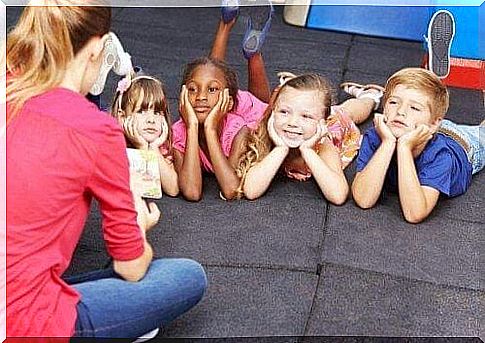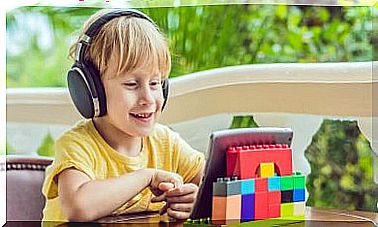How To Develop Phonological Awareness? – Being Parents

Phonological awareness is the recognition of the sounds of speech, whether by listening to it or producing it. As a human being interacts with others through speech, he develops this ability. Over time, the child learns that orality is made up of words, words of syllables and syllables of phonemes.
When identification is complete, children can begin to manipulate sounds in their oral speech. When this is acquired, they then have the basics for the process of visual letter recognition.
Therefore, printed illustrations should not be used to develop phonological awareness. This ensures that no step is omitted in the process.
The following activities are useful for developing sound recognition before starting the reading-writing exercises.
Exercises to stimulate the development of phonological awareness
The listening game
The first sounds that a child will learn to recognize are those of everyday life. Ask your child to sit quietly in one place for a few minutes. Then ask him what he heard during this time. He will probably talk about the noise of cars, doors opening and closing, air conditioning, etc.
The onomatopoeia game
This game is ideal for sharing a moment with the family. Sit in a circle and bring your child in the middle with their eyes closed. Then a person will have to stand up, go to a place and imitate an animal’s cry out loud.
The child will have to indicate with his finger where the voice comes from. These games are important. Indeed, they help improve hearing and concentration in children.

Rhymes
They are wonderful instruments for developing phonological awareness. Rhymes help the child to perceive the existence of very similar sounds and to imitate language patterns.
The best way to bring rhymes closer to everyday life is to sing songs, read poems and riddles. Don’t be afraid to articulate. It will make the moment even funnier.
The game of images
Once your child is familiar with the concept of rhymes, you can increase the difficulty of the exercises. Take a box and put some illustrations of objects with rhyming names in it. The child will have to take out the images and group them according to the sounds of the names.
The game of syllables
Understanding the division of words into syllables is important in defining the basics of good spelling and understanding the units of the language. In this activity, the whole family can participate. We sit in a circle. Then, each one says his name while applauding to the rhythm of the syllables which compose it.
We can then use longer words that you suggest. You can also use pictures to name things or look around and tell what objects there are.
Traditional songs
If we translate the famous refrain in Spain Cuando tengas muchas ganas de gritar , it gives “When I really want to scream”. This can be very useful for having a fun time and practicing syllabic division.
After the song, show a picture of an object whose number has multiple syllables. The children will sing and clap as the word is spoken. You can change actions (screaming, jumping, crying) to keep the child focused and attentive.

Phonological awareness, a fundamental ability
As you can see, phonological awareness is a fundamental ability for the proper development of other communication skills. This is why it is essential to stimulate it through very simple activities, like the ones we have mentioned.
Remember that it is essential that you make an effort every day to improve your children’s listening skills. From this depends the fluidity of the read-writing process.








